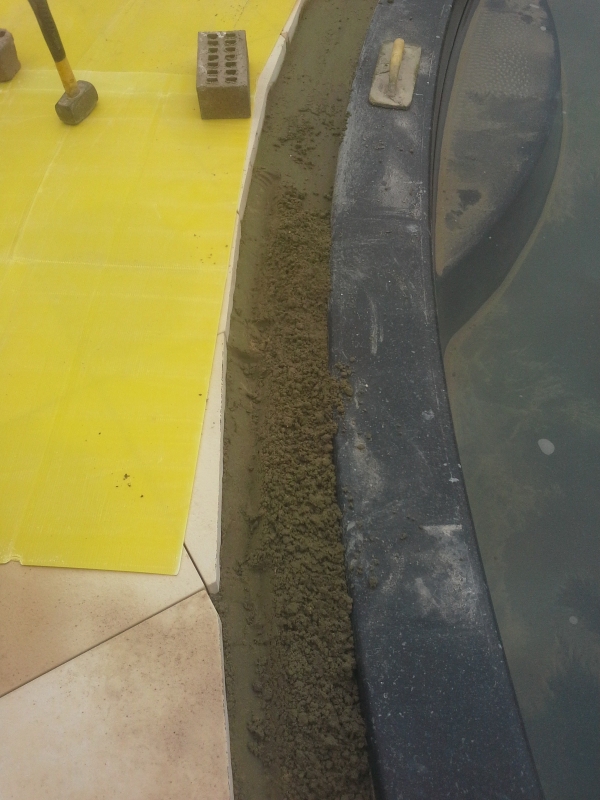
Do you come across loose bull nosed paving to the pools edge? This way works well.
We have repaired a lot of pools with loose paving on the edges that have used a silicone type of adhesive. It may well work with at least %50 of the paver covered in that adhesive though on most occasions i estimate that the coverage is more like %20. We found that the silicone type adhesive bonded to the fibreglass but eventually worked it way loose from the paving brick.
In the case of water proofing a shower recess you are creating a smooth surface impervious to water. Tile adhesive has been developed to stick to this surface. Fibreglass has the same characteristics. The top rim of the pool is about 230 mm wide and a concrete bullnosed paver is 400 mm. This leaves 170 mm of the paver bearing onto a substrate like sand though nowadays I am lead to believe cracker dust is being used to fill the final fill around the sides.
The problem is that the pavers surface is not %100 in contact with an adhesive. The action of standing on the edge of the paver and diving is trying to lift the back of the paver. To get %100 coverage of the adhesive we use a tilers cement screed at least 50 mm thick around the pools edge. We then use a high quality tile adhesive.
The tilers screed is compacted down tight, in this case we used the head of gympie hammer and then floated flat with the top of the pool. It is a good idea to try a little bit of tile adhesive on the fibreglass before commencing. The job below has not moved in over 10 years.

